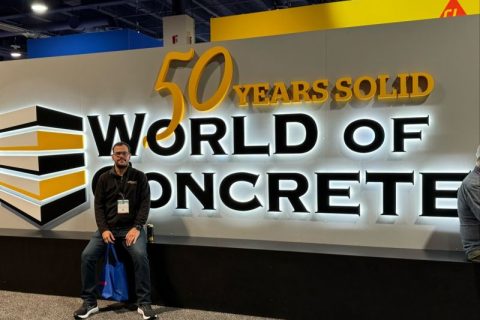By Daniel Green
Let’s say it’s 1950. You’re about to commission your baby: a multi-million dollar civil asset you’ve helmed for years. Except for merely hours before the big event, right where the podium and dignitaries will be situated, you’ve got a problem. Water is leaking through a hairline crack in one of your concrete retaining walls. With no other option, you grit your teeth and accept the fact that public humiliation and expensive rectification works are going to be a part of your future. Look on the bright side. At least people will remember your name. Fast forward to 2021. Same asset, same water leak, same impending commissioning ceremony, same timeframe. Except for this time that pesky dribble is permanently repaired and dry within a matter of hours. Project intact, career intact, dignity intact.
What Is The Craic?
Well for one thing it’s an Irish term for fun, entertainment, a wee bit o’ banter, and good clean mischief. Unfortunately, there’s no craic around when you’re in a situation that needs concrete repairs. Crack injection is a fast-acting, inexpensive remedy for concrete cracks and concrete delamination. It is strong, durable, long-lasting, and has very few application limitations.
Concrete crack injectables can be employed in two distinct ways:
- Structural repairs – Injectables in which the retention of structural integrity is absolutely necessary. These repairs almost always call for a two-part epoxy resin that cures in situ.
- Non-structural repairs – Injectables in which the retention of structural integrity is unnecessary. These repairs almost always call for a one-part polyurethane resin that cures in situ.
Epoxy resins are the Araldite of concrete crack injection – a binary liquid that undergoes a chemical reaction when mixed. It is married on site and ‘injected’ via a narrow tube into the offending area. The two stages make contact, a catalyst occurs, and shortly afterward the mix cures – rendering the fault innocuous. Epoxy injectables are used primarily where strength is required over flexibility.
On the other hand, Polyurethane resins are more like Sikaflex – a single-stage product that needs no mixing, only application. It is also ‘injected’ via a narrow tube and then sets. Urethane injectables are used primarily where flexibility is required over strength.
Not Just Any Craic
Two-stage resins are designed specifically for structural repairs, which means they have the same – if not better – properties than the original sub-base. These products cure to form a hardened mass that is just as strong as the concrete that it’s being used to repair. And like that concrete, it can withstand the same physical duress and is very difficult to scratch, chip or damage. In fact, it’s so durable that once cured it doesn’t need any further finishing, so it can be used to repair roads, tunnels, bridges, and similar high traffic assets.
Single-stage resins are designed primarily for non-structural water-retention repairs: leaks. They don’t need to have the strength of two-stage resins but they do need to have superior flexibility. Whilst they’re not as durable to striking as epoxies, they do have contact-resistant properties, although this isn’t their primary requirement. Because they’re relatively malleable, they can be used where frequent mass and/or torsional loading and unloading are a factor.
Epoxies: two-stage resins that are strong and durable but inflexible and are used primarily for structural repairs.
Urethanes: single-stage resins that are flexible but should not be used for structural repairs, only leaks.
The Craic’s Ninety
Whilst crack-injected epoxy resins can be applied in a wide range of elemental conditions, they prefer drier, higher temperature environments where they can cure the fastest. They have a working range of 1mm to 6mm – anything outside of that and the material is pushed beyond its physiological properties which often results in failure. There’s been some rare success in applying injectable epoxies to wet concrete, but for the most part, these methods are highly-expensive, highly technical exercises with very low chances of success.
Polyurethane injectables are a bit more forgiving with their environmental tolerances, which means they can be used in ‘poorer’ conditions. They have no upper limit – although they cannot be used in apertures lower than 1mm. One of the major advantages is that urethanes can be produced with substantial variations in their physical properties, with some of them curing into foam-like materials that retain their malleability. And because most foaming polyurethane resins require some form of water catalyst, they’re a natural choice for wet concrete and wet environments.
Epoxies: prefer drier, higher temperature working conditions.
Urethanes: have a wider range of working conditions that can also lend them to wetter installs.
That’s Some Craic
Whilst crack injection will not cure every concrete ailment, it is certainly a viable crack and water retention repair system that can last and even outlast the original pour. The best course of action is to get a professional opinion from Perfect Concrete Care.
If you’re still in two minds, try pricing up a demolition and reconstruction package. We know some blokes who can do that kind of work as well.











